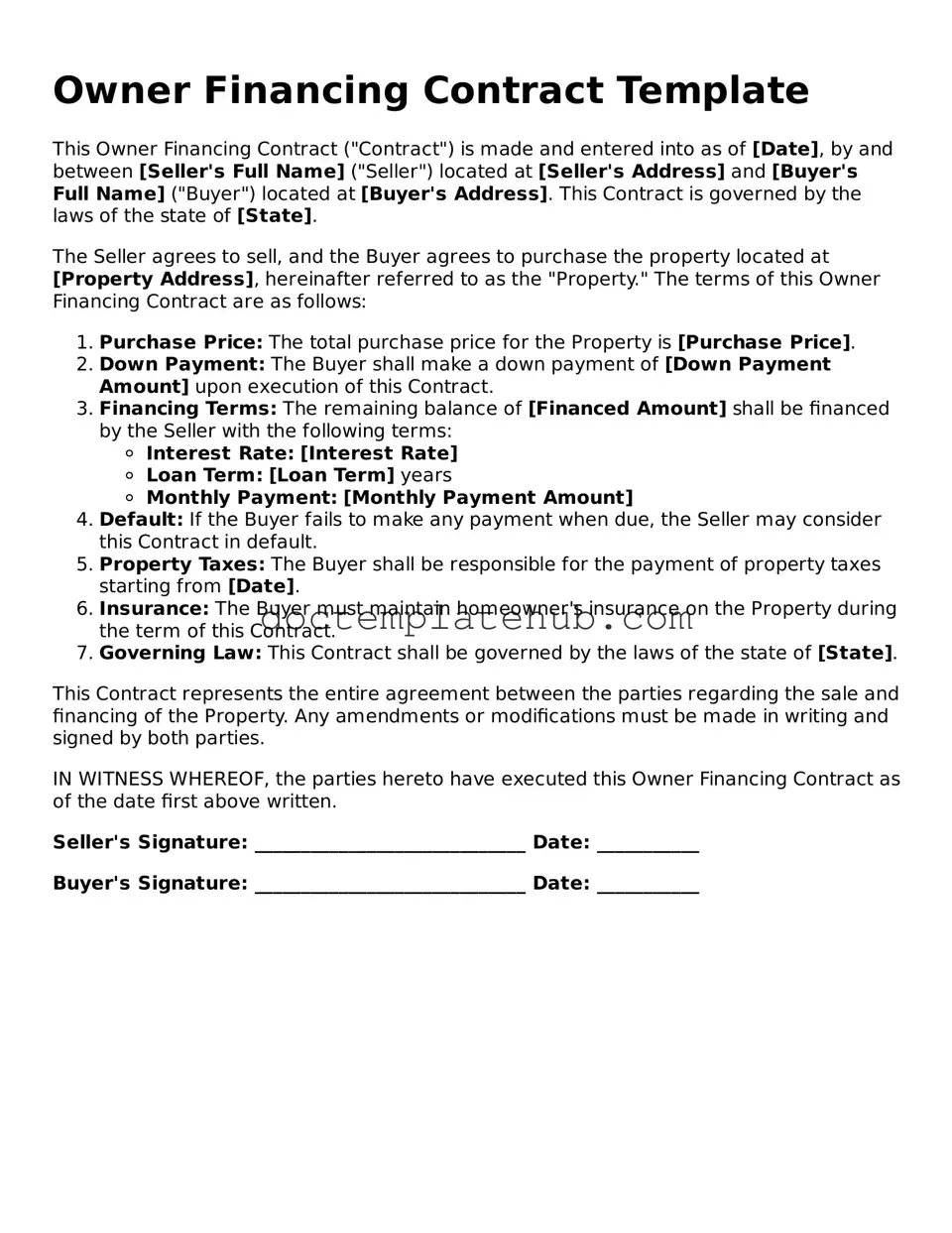What is an Owner Financing Contract?
An Owner Financing Contract is an agreement between a buyer and a seller where the seller provides financing to the buyer to purchase a property. Instead of the buyer obtaining a traditional mortgage from a bank or lender, the seller allows the buyer to make payments directly to them over a specified period. This arrangement can benefit both parties, especially when traditional financing options are not available or desirable.
What are the benefits of using an Owner Financing Contract?
One major benefit is flexibility. Sellers can negotiate terms that work for them, while buyers may find it easier to qualify for financing. Additionally, sellers can potentially receive a higher sale price or a quicker sale. Buyers often enjoy lower closing costs and may avoid some of the strict requirements set by banks.
What terms should be included in an Owner Financing Contract?
Key terms should include the purchase price, down payment amount, interest rate, repayment schedule, and duration of the loan. It's also important to outline any penalties for late payments, responsibilities for property taxes and insurance, and what happens if the buyer defaults on the loan. Clear terms help prevent misunderstandings later on.
Is a down payment required in an Owner Financing Contract?
While a down payment is not always mandatory, it is often recommended. A down payment can show the seller that the buyer is committed to the purchase. It also reduces the amount financed, which can lead to lower monthly payments. The specific amount can vary based on negotiations between the buyer and seller.
Can an Owner Financing Contract be used for any type of property?
Yes, Owner Financing Contracts can be used for various types of properties, including residential homes, commercial buildings, and vacant land. However, the willingness of the seller to offer financing may depend on the type of property and market conditions. It's essential for both parties to understand the property’s value and the risks involved.
What happens if the buyer defaults on the loan?
If the buyer defaults, the seller typically has the right to foreclose on the property, just like a bank would in a traditional mortgage scenario. This means the seller can reclaim the property and may keep any payments made up to that point. Clear default terms should be outlined in the contract to protect both parties.
Is it necessary to involve a lawyer in an Owner Financing Contract?
While it is not legally required, involving a lawyer is highly advisable. A lawyer can help ensure that the contract complies with local laws and regulations. They can also assist in drafting clear terms to protect both parties’ interests. Having legal guidance can help prevent potential disputes in the future.
